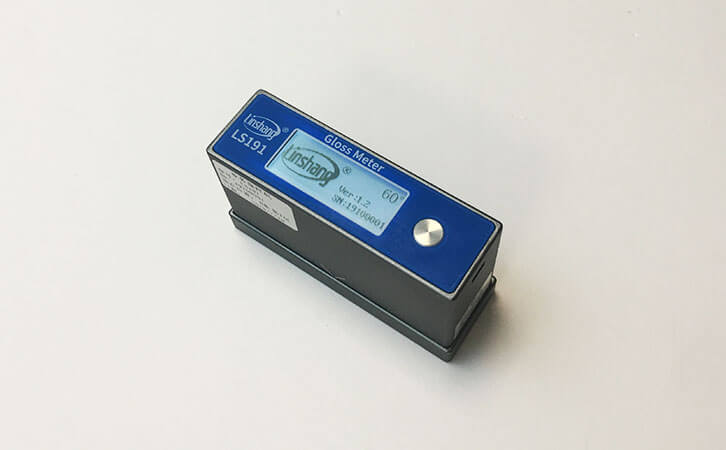Why Do We Use Gloss Meter to Measure Gloss?
In many industries, appearance has become an increasingly important criteria of product quality. Appearance not only includes structural design and color matching, but more importantly, the finished gloss must reach a certain level. Good gloss products are often more in line with the public's aesthetics and are more likely to be recognized and sought after by consumers and customers. Therefore, more and more manufacturers have begun to pay attention to the product gloss. However, it is difficult to judge with the naked eye whether the gloss is up to standard. The gloss meter can reflect the gloss as specific data, thereby helping us to make better judgments.
Gloss is a surface characteristic of an object and depends on the surface's ability to reflect light specularly. Specular reflection is a phenomenon in which the reflection angle is the same as the incident angle. Gloss can be divided into several categories according to its characteristics. Among them, the gloss meter can measure what we call mirror gloss. Therefore, the LS191 gloss meter is sometimes called a specular gloss meter.
The measuring principle of the gloss meter is to calibrate the surface gloss by the principle of light reflection. The gloss meter is mainly composed of a transmitter and a receiver. The transmitter has a luminous source and a group of lenses, which can form an incident light source according to a certain angle. The receiver contains a lens and a photosensitive element, which can receive the light beam reflected from the measured object surface.
Depending on the angle of incidence chosen during the measurement, the angle of reflection will also change. The larger the angle of incidence, the greater the specular reflectance and the higher the gloss of the object surface. At present, the common gloss meter angles on the market are 20 degrees, 45 degrees, 60 degrees, 75 degrees and 80 degrees. Among them, the gloss meter with an angle of 85 degrees is used to measure low gloss and the one with an angle of 20 degrees is used to measure high gloss. At present, the most widely used is a 60 degree gloss meter. Taking into account the different working conditions, some manufacturers have also produced dual-angle or even three-angle gloss meters, which can better meet the various needs of customers in daily use.
The gloss meter has a wide range of applications. It can measure the surface gloss of various materials, including plastic, marble, hardware, etc. Usually, the gloss meter with wide measurement range can measure the gloss in the range of 0 ~ 1000GU.
At present, China has established a national gloss level benchmark at the Shanghai Institute of Metrology and Testing Technology (SIMT). All qualified gloss meter manufacturers must strictly adhere to this benchmark. The working gloss meter is divided into two levels according to its measurement accuracy.The first level gloss accuracy is the highest and the second level is the second. At the same time, the gloss meter is a measuring instrument, it should be checked regularly according to national requirements. According to JJG696-2002 "Specular Gloss Meter and Gloss Board", the national measurement verification regulations stipulate that the interval between two verifications of the gloss meter should not exceed one year to ensure its accuracy. For detailed information about Linshang gloss meter, please read "How to Measure Gloss with A Gloss Meter?".
